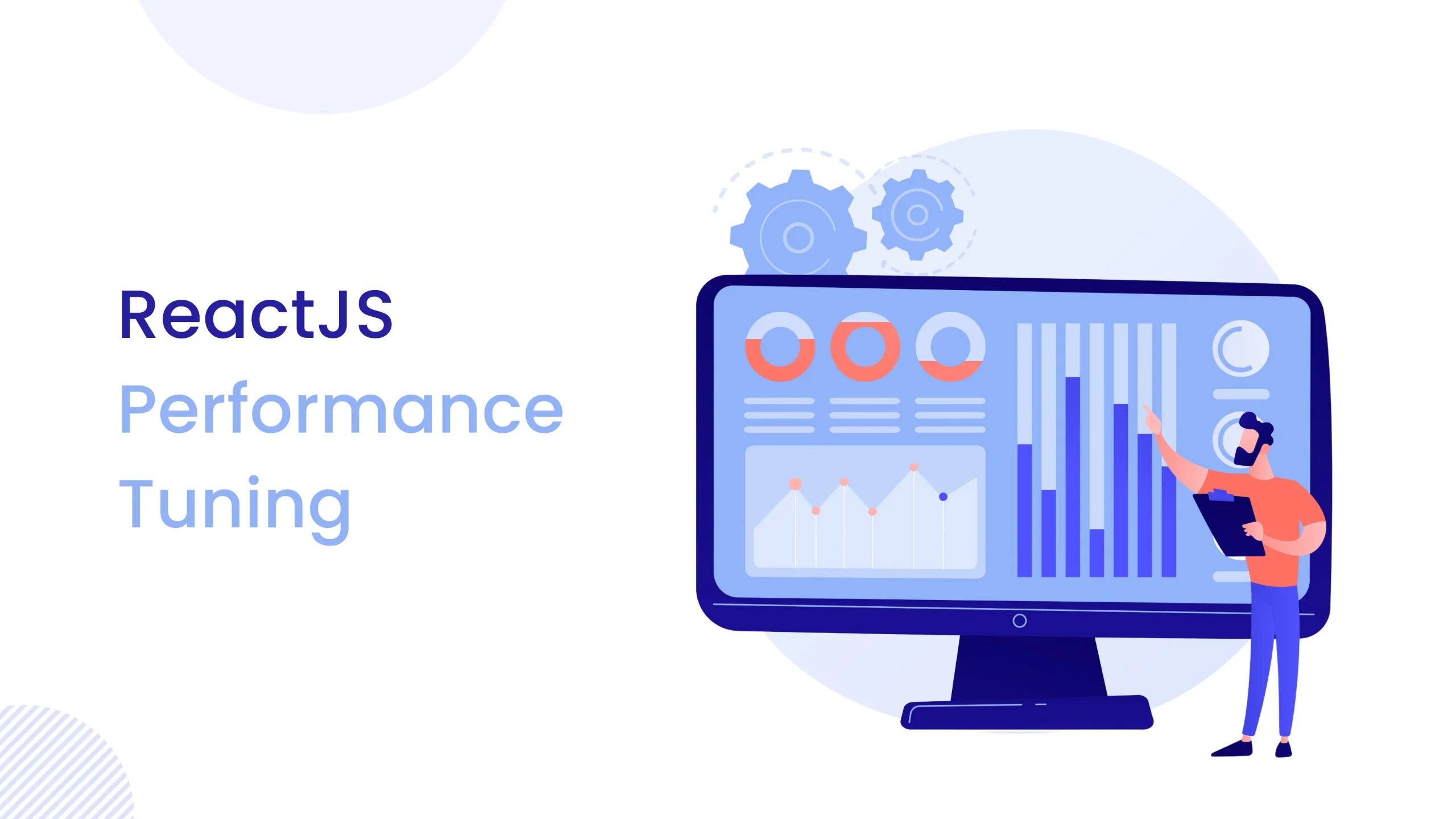Introduction
React automatic batching is a powerful optimization technique in React that groups multiple state updates into a single render. By batching updates, React minimizes the number of re-renders, improving performance and ensuring smoother UI interactions. Batching occurs automatically in event handlers and lifecycle methods, allowing developers to write efficient code without manual intervention. This optimization is especially useful in complex applications where multiple state changes occur rapidly, as it reduces unnecessary renders and boosts overall application efficiency. Understanding React batching is key to building fast and responsive React applications.
Prerequisites
- Node.js and npm
- React
Understanding React Automatic Batching : Optimizing State Updates
Why React Automatic Batching Matters for Enhancing Application Performance
In traditional React state updates, each call to setState triggers a re-render of the component where the state is defined. This means that when multiple state updates are executed in quick succession, React may initiate a separate re-render for each update. The challenges include:
- Excessive Re-renders : Frequent state updates can lead to a high number of re-renders, especially in components that depend on multiple pieces of state. This can create performance bottlenecks, particularly in large applications with many components.
- Inefficient Reconciliation : React uses a reconciliation algorithm to determine what changes need to be made to the DOM. When there are too many updates, this process becomes more complex and time-consuming, potentially leading to noticeable delays in UI responsiveness.
- Increased CPU and Memory Usage : Each re-render consumes CPU resources and memory. If state updates occur rapidly, they can lead to increased load on the browser’s rendering engine, which may cause the application to become sluggish or unresponsive.
Recognizing the challenges posed by traditional state updates, React has evolved to incorporate more efficient rendering techniques, including:
Automatic Batching (React 18+) : React introduced automatic batching, which allows multiple state updates to be batched together, minimizing re-renders. This means that if several state updates occur in the same synchronous event loop (like within an event handler), React groups these updates and performs a single render. This improvement significantly enhances performance, particularly in complex applications.
Advantages of React Batching
- Reduced Re-renders : Minimizes the number of re-renders by grouping state updates.
- Improved Performance : Enhances application performance, especially in high-frequency state updates.
- Smoother User Experience : Provides a more responsive UI by avoiding lag during updates.
- Less Boilerplate Code : Simplifies code by reducing the need for manual optimization.
The Pre-Batching Era : The Challenges of Traditional State Updates in React
Before React 18 introduced automatic batching for all state updates, React had a form of batching that was limited to native events. This meant that while updates triggered by native browser events (like clicks or keyboard inputs) were batched together to optimize rendering, updates made in asynchronous contexts—such as setTimeout, setInterval, or network requests—were processed individually. Non-browser native events include user-defined events, synthetic events created by React, and any event that occurs outside the direct interaction with the browser interface.
Code Snippet with Native Event Batching
import React, { useState, useEffect } from 'react';
const NativeEvent = () => {
const [count, setCount] = useState(0);
useEffect(() => {
console.log('Component re-rendered with count:', count);
}, [count]);
const handleClick = () => {
console.log('Before updates, count:', count);
// Batching for native events (handled by React 16)
setCount((prevCount) => {
console.log('First update, previous count:', prevCount);
return prevCount + 1;
}); // First update
setCount((prevCount) => {
console.log('Second update, previous count:', prevCount);
return prevCount + 1;
}); // Second update
console.log('After updates in same event loop, count:', count); // Logs initial count (due to batching)
};
return (
<div>
<p>Count: {count}</p>
<button onClick={handleClick}>Increment with Native Event Batching</button>
</div>
);
};
export default NativeEvent;
Output

What Happens Here
Batching for Native Events : The handleClick function triggers both setCount calls through a native event (the button click).
Single Re-render : React batches these state updates, resulting in a single re-render of the NativeEvent component.
Functional Updates : Using functional updates (prevCount) ensures each update accesses the latest state value for accurate results.
Code Snippet of State Updates Without Batching
Without Batching (Asynchronous Context):
import React, { useState, useEffect } from "react";
const NonNativeUpdate = () => {
const [count, setCount] = useState(0);
useEffect(() => {
console.log("Component re-rendered with count:", count);
}, [count]);
const incrementAsync = () => {
console.log("Before async updates, count:", count);
setTimeout(() => {
// First update (uses functional update to ensure the latest value is used)
setCount((prevCount) => {
console.log("First update, previous count:", prevCount);
return prevCount + 1;
});
// Second update (again using functional update)
setCount((prevCount) => {
console.log("Second update, previous count:", prevCount);
return prevCount + 1;
});
}, 1000);
};
return (
<div>
<p>Count: {count}</p>
<button onClick={incrementAsync}>Increment Async With Two Re-renders</button>
</div>
);
};
export default NonNativeUpdate;
Output

What Happens Here
- Asynchronous State Updates : In the incrementAsync function, setCount is called within a setTimeout, simulating an asynchronous operation. Since setTimeout is not a native event, React does not automatically batch these updates (before React 18).
- Two Distinct Re-renders : With the updated code using functional updates (prevCount => prevCount + 1), each setCount triggers a separate state update and causes two distinct re-renders. This allows users to observe the state change in two steps, which was not possible with direct state updates.
- Closure Issue Resolved : By using functional updates, the state inside setTimeout no longer suffers from closure issues. Each setCount call now uses the most recent state value, allowing for consistent and sequential updates. The console.log(‘Count:’, count) inside the timeout still logs the initial value due to closure, but the functional updates ensure the latest state is reflected during rendering.
Post-Batching : Enhancements in State Management and Performance
With the introduction of automatic batching in React 18, all state updates—whether triggered by native events or non-native events—are now batched together. This means that updates made in asynchronous contexts like setTimeout, setInterval, or even inside promises are no longer processed individually. This enhancement reduces unnecessary re-renders and improves performance significantly, especially in applications where multiple updates happen frequently within the same event loop.
Code Snippet with Automatic Batching
import React, { useState, useEffect } from 'react';
const BatchingExample = () => {
const [count, setCount] = useState(0);
const [asyncCount, setAsyncCount] = useState(0);
const [hasRendered, setHasRendered] = useState(false); // Track if it's the first render
useEffect(() => {
// Log only on initial render
if (!hasRendered) {
console.log('Initial render. Count:', count, 'Async Count:', asyncCount);
setHasRendered(true);
} else {
// Log on subsequent updates
console.log('Component updated. Count:', count, 'Async Count:', asyncCount);
}
}, [count, asyncCount]);
const handleNativeClick = () => {
console.log('Before native event batching. Current count:', count);
// Native event batching - updates are applied immediately
setCount((prevCount) => {
console.log('First update for native event, previous count:', prevCount);
return prevCount + 1;
});
setCount((prevCount) => {
console.log('Second update for native event, previous count:', prevCount);
return prevCount + 1;
});
};
const handleAsyncClick = () => {
console.log('Before async updates. Current asyncCount:', asyncCount);
// Simulating an asynchronous operation
setTimeout(() => {
setAsyncCount((prevAsyncCount) => {
console.log('First update for async, previous asyncCount:', prevAsyncCount);
return prevAsyncCount + 1;
});
setAsyncCount((prevAsyncCount) => {
console.log('Second update for async, previous asyncCount:', prevAsyncCount);
return prevAsyncCount + 1;
});
}, 1000); // Delay of 1 second before the async updates
};
return (
<div>
<p>Count (Native Event): {count}</p>
<p>Async Count (Non-Native Event): {asyncCount}</p>
<button style={{ margin: '10px' }} onClick={handleNativeClick}>
Increment Count (Native Event)
</button>
<button onClick={handleAsyncClick}>Increment Async Count (Non-Native Event)</button>
</div>
);
};
export default BatchingExample;
Output

What Happens Now
Native Events (Click)
When the Increment Count (Native Event) button is clicked, the handleNativeClick function batches the two setCount updates, resulting in a single re-render of the component with the updated count value.Non-Native Events (Async)
Clicking the Increment Async Count (Non-Native Event) button triggers the handleAsyncClick function, which sets a timeout for two setAsyncCount updates. These updates are also batched together, leading to one re-render instead of two, optimizing performance by reducing unnecessary updates.
This unified approach to batching state updates makes React’s rendering behavior more consistent and efficient.
The Purpose of flushSync in React Batching
flushSync is needed in batching to force React to apply state updates immediately rather than waiting for the next render cycle. This is particularly useful in scenarios where you want to ensure that the DOM is updated right away after a series of state changes, such as in cases involving animations or when interacting with external libraries that depend on the current state of the DOM. By using flushSync, you can manage complex updates while still benefiting from React’s optimization features.
Code Snippet with flushSync
import React, { useState } from 'react';
import { flushSync } from 'react-dom';
const FlushSyncExample = () => {
const [counter, setCounter] = useState(0);
const [flag, setFlag] = useState(false);
useEffect(() => {
console.log(counter, flag);
}, [counter, flag]);
const handleClick = () => {
flushSync(() => {
setCounter(c => c + 1);
});
console.log('Counter after first flushSync:', counter); // Logs the updated counter value
flushSync(() => {
setFlag(f => !f);
});
console.log('Flag after second flushSync:', flag); // Logs the updated flag value
};
return (
<div>
<p>Counter: {counter}</p>
<p>Flag: {flag ? 'True' : 'False'}</p>
<button style={{ margin: '2px' }} onClick={handleClick}>
Increment Counter and Toggle Flag
</button>
</div>
);
};
export default FlushSyncExample;
Output

What Happens Now with flushSync
Immediate State Updates : When the Increment Counter and Toggle Flag button is clicked, the handleClick function utilizes flushSync for the two state updates. The first flushSync call increments the counter, ensuring that the updated value is immediately available for logging.
Synchronous Rendering : After the first flushSync, the updated counter value is logged, reflecting the immediate change due to flushSync. Following that, the second flushSync toggles the flag. This synchronous update ensures that the new flag state is also logged right away.
Optimized User Experience : By using flushSync, both state updates occur without delay, allowing users to see the updated counter and flag values instantly. This is crucial for maintaining responsiveness in interactive applications, where timely feedback enhances the user experience.
Conclusion
In summary, React’s batching feature enhances performance by consolidating state updates into a single render cycle. This not only minimizes unnecessary re-renders but also streamlines the rendering process, leading to a more responsive user interface. With automatic batching, developers can focus on building applications without worrying about the overhead of manual optimization, making it easier to manage complex state changes efficiently. Overall, mastering batching is essential for creating high-performance React applications.




